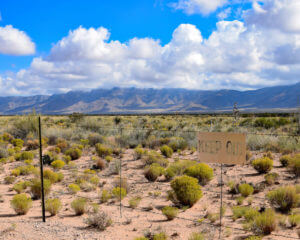
In the middle of the 20th century, many countries tested nuclear bombs in the sky, not knowing about the long-term effects. These atmospheric nuclear tests had terrible impacts on people’s health and the environment.
In this blog, we will explore the hidden dangers of these tests and offer help to those impacted by atmospheric nuclear testing by the United States.
What Are Atmospheric Nuclear Tests?
Atmospheric nuclear tests are when nuclear bombs are exploded in the air. Unlike tests done underground or underwater, these explosions spread radioactive materials all over the place.
Countries like the United States, the Soviet Union, and France did many of these tests during the Cold War.
These nuclear tests often happened on remote islands or empty areas, but the radioactive fallout didn’t stay there. It traveled through the air, affecting places thousands of miles away.
At first, people didn’t realize how bad the impact was, but over time, the serious consequences became clear.
The Beginning of the Nuclear Age
The United States did the first atmospheric nuclear test in 1945. This successful test led to the use of nuclear bombs during World War II.
After the war, the United States and the Soviet Union competed to build more powerful nuclear weapons, doing many more atmospheric tests.
In the 1950s and 1960s, there was a big increase in these tests. Both superpowers tested bombs in places like the Nevada Desert, the Pacific Ocean, and Siberia.
They wanted to show their military strength and technological skills, but these tests had wide-ranging negative effects on people and the environment.
Fallout From the Skies
When a nuclear bomb explodes in the air, it creates a cloud of tiny radioactive particles called fallout. The wind spreads these particles, and they eventually fall to the ground. Fallout can make soil, water, and plants unsafe for a long time.
The radioactive particles from these explosions include things like strontium-90, cesium-137, and iodine-131. These particles stay dangerous for many years. If they get into food, they can make people and animals very sick.
Health Effects on Humans
The radiation from atmospheric nuclear tests has had significant health impacts. Understanding these impacts can help us appreciate the gravity of these tests.
Immediate Health Consequences
People living near test sites faced immediate health risks. Radiation exposure led to acute radiation sickness, characterized by nausea, vomiting, and hair loss. In severe cases, it could be fatal.
Long-Term Health Consequences
Long-term exposure to radiation has been linked to various cancers, including thyroid, breast, and lung cancer. Studies have shown that people living downwind of test sites had higher cancer rates.
Genetic Effects
Radiation can also cause genetic mutations. These mutations can be passed down to future generations, leading to birth defects and other genetic disorders.
Environmental Impact
The environment has not been spared from the adverse effects of atmospheric nuclear tests. The fallout has left a lasting mark on impacted regions.
Air and Water Pollution
The explosions released radioactive particles into the air, which eventually settled on the ground and in water bodies. This contaminated the air and water, making them unsafe for consumption.
Soil Contamination
Radioactive fallout settled in the soil, contaminating it for years. This affected agriculture, as contaminated soil can lead to unsafe crops.
Impact on Wildlife
Wildlife in and around test sites suffered greatly. Radiation exposure led to mutations and deaths in various animal species, disrupting local ecosystems.
International Response and Treaties
The harmful effects of nuclear tests in the air made countries work together to stop these tests.
Partial Test Ban Treaty
In 1963, countries signed the Partial Test Ban Treaty. This treaty stopped nuclear tests in the air, underwater, and in outer space. It helped reduce dangerous radioactive fallout.
Comprehensive Nuclear Test Ban Treaty
In 1996, the Comprehensive Nuclear Test Ban Treaty (CTBT) was created to ban all nuclear explosions. Even though it’s not fully active yet, many countries support it.
Role of International Organizations
Groups like the International Atomic Energy Agency (IAEA) watch over nuclear activities and help reduce the dangers of nuclear testing.
Compensation for Atmospheric Nuclear Tests
The effects of atmospheric nuclear testing on health and the environment are profound and lasting. From immediate health impacts to long-term environmental damage, the legacy of these tests continues to affect us.
At Cancer Benefits Center for Downwinders®, we can help you determine your eligibility for downwinders compensation under RECA and file a claim. We can also follow up to stay informed about the progress of your claim and address any additional requirements promptly.
For more information about how we can help you, call today at (855) 631-7197 or fill out our Downwinders application form to contact us. We look forward to serving you.
 Downwinders® Claims
Downwinders® Claims